You May Not Be Putting Enough Sunscreen On Your Face. Here's How To Tell.
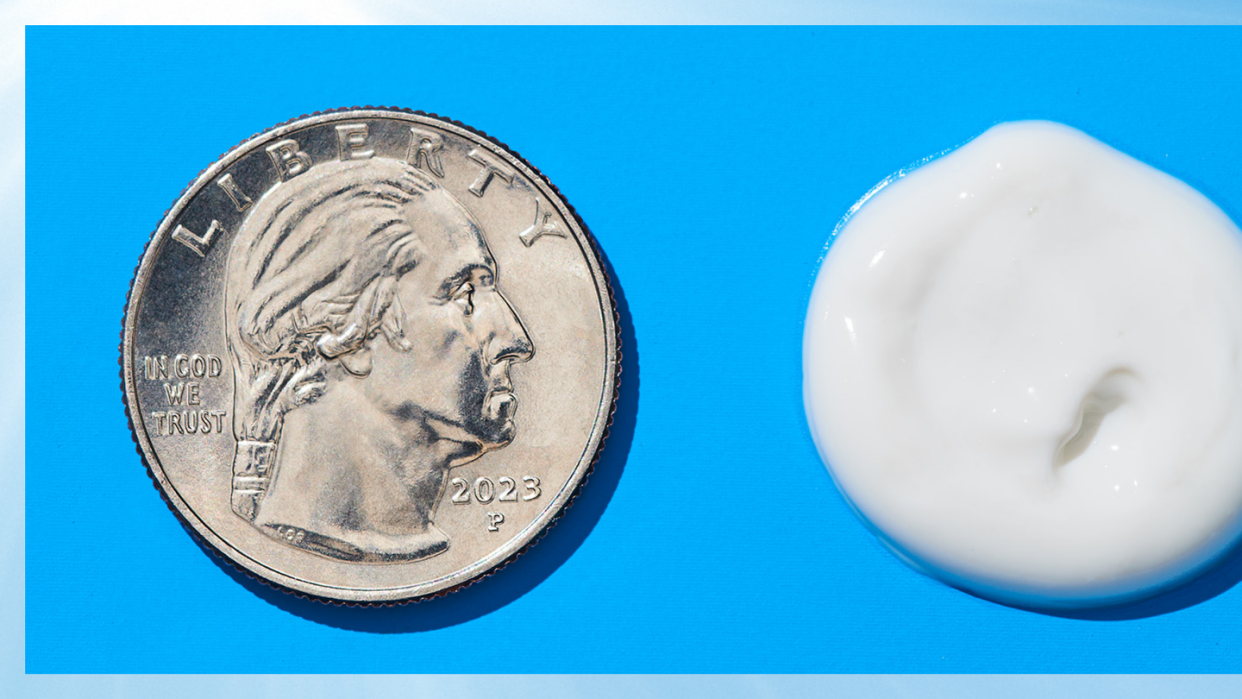
"Hearst Magazines and Yahoo may earn commission or revenue on some items through these links."
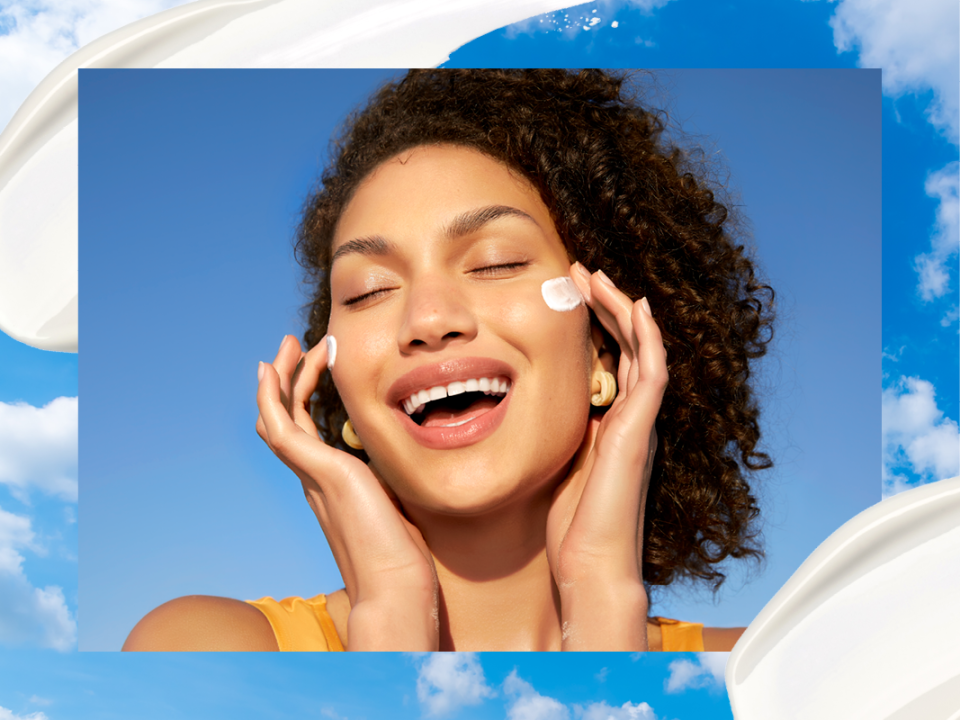
If there were only one skin-care product you could buy, face sunscreen should be it. Along with helping you sidestep painful sunburns, it’s proven to fend off skin cancer, one of the most commonly diagnosed (and preventable) cancers in the U.S. It’s also the best (and most affordable) anti-aging product on the market: Sunscreen protects against UV damage, which is responsible for 80 percent of visible face aging (you know, wrinkles, sagging, and dark spots). It’s a win for your health and your vanity.
Sunscreen is so important that dermatologists want you to stash a tube somewhere conspicuous so that using it becomes habit (one study, for example, found that putting sunscreen next to your toothpaste increased usage). “A sunscreen that has at least an SPF of 30 should be applied to the face, ears, neck, and hands every morning—rain or shine, winter or summer—and reapplied after two hours, even if you’re just sitting near a window inside or walking around casually outdoors,” says Shari Marchbein, MD, an assistant professor of clinical dermatology at New York University School of Medicine.
But here’s the thing. As critical as sunscreen is, it’s not foolproof. You have to use it correctly to enjoy its protective benefits. That includes knowing how much to apply—and you may be surprised to learn that you’re not using enough. So, in an effort to empower you with some SPF know-how, we tapped top dermatologists to create a helpful guide that breaks down what sunscreen is, how it works, how to choose the right formula for your skin type, and, most important, how much you really need to be slathering on every day.
Read on to keep your skin healthy and protected—all year long.
[table-of-contents] stripped

Exactly How Much Sunscreen You Should Apply To Your Face
Dermatologists recommend wearing a SPF 30 or higher every day to prevent premature aging and skin cancers. But did you know that there’s a specific amount you must use to get that SPF 30 protection? Probably not, since the directions on most tubes and bottles merely suggest applying liberally or generously. (Even though sunscreen is regulated like a drug in the U.S., brands are not required to provide consumers with specific information about proper application.)
Slide To See The Right Amount
To label a product as an SPF 30, for example, a company must test the formula in a very specific way, which involves spreading a certain amount of sunscreen over a certain size area over a certain amount of time, explains Anthony Rossi, MD, a dermatologist at New York’s Memorial Sloan Kettering Cancer Center who specializes in Mohs micrographic surgery—a method that removes skin cancer while keeping healthy tissue safe.
But the truth is, “in real-world settings, people aren’t applying as much as they should,” says Marisa Garshick, MD, a clinical assistant professor of dermatology at New York-Presbyterian Weill Cornell Medical Center. In fact, real-world application habits reduce the SPF, or sun protection factor, by as much as half, according to research. It’s also important to note that the number on the bottle “is predicated on a person reapplying the same amount every two hours,” Dr. Rossi adds.
This Is How Much Cream You Need
However, science-backed guidelines do exist to help you achieve the SPF number listed on the label—even if they’re not in plain sight. In this study, researchers divided the body into 11 areas, each representing approximately 9 percent of your total surface area, and found that the correct amount is two milligrams of sunscreen per square centimeter of skin. For the face, head, and neck, that amount is equivalent to squeezing a strip of sunscreen onto the index finger and another onto the middle finger, from fingertip to base, or using a quarter-sized dollop. And remember: Don’t forget your ears and around your hairline. “These areas tend to be missed and can easily burn,” Dr. Rossi says.
The Best Way To Apply Stick Formulas
Some formulas, like creams, make dosage easier. But it can be tough to gauge the exact amount you’re using if you opt for one of the newer spritz-on face sunscreens, which is why many of our experts don’t recommend using them as your primary source of protection. However, if you hold the bottle two to three inches from your skin and spray on a thick layer that creates a whitish film, sprays can provide decent coverage, Dr. Marchbein says. As for stick sunscreens, Dr. Garshick recommends four passes back and forth on each area of the face (forehead, cheeks, nose, chin, and neck). Then rub it in for even coverage.
Bottom line: You have to be intentional with how you use sunscreen in order to reap the full benefits.
Why do I have to wear sunscreen every day? Even though UV rays vary depending on the time of the day, the season, the altitude, and other factors (the UV Index measures this), they’re assaulting your skin year-round. “They can even pass through clouds and window glass,” Dr. Rossi says. And all the incidental exposure from running errands or driving to work adds up over time, which is why dermatologists are so emphatic about the importance of daily SPF use.

What Is The Best Way To Reapply Sunscreen?
The ingredients in sunscreen naturally break down or rub off over time, rendering the product less effective as the minutes tick by. “Sweating, swimming, or showering can also wash away sunscreen,” Dr. Garshick explains. That’s why the amount of sunscreen described above must be reapplied every two hours to retain its efficacy. NBD during a day at the beach or pool, but what about those times when you’ve put on a full face of makeup after your first coat of SPF? TikTok has an interesting solution, which involves dispensing sunscreen onto a beauty sponge and dabbing it onto your face. We tried the hack, and it truly does work like a charm. And the dermatologists we spoke with agree it’s a good solve for a common problem.
Smart Strategies For Reapplication
Dr. Marchbein also recommends brush-on powder SPFs for over-makeup touch-ups. To ensure you’re getting enough coverage, apply a brush for 15 seconds to each quadrant of your face. And Dr. Garshick also finds sunscreen sticks and sprays to be helpful when it comes to reapplication over makeup. “Although they may not give you the same coverage as a lotion or a cream, sticks and sprays are better than nothing and can be a good option for someone who otherwise wouldn’t reapply her SPF over makeup,” she says.
And keep in mind that sunscreen can’t be your everything:“It is important to incorporate other sun-protective measures, including seeking shade when possible, wearing a wide-brimmed hat, and wearing sunglasses,” says Dr. Garshick.

What Is Sunscreen (And How Does It Work)?
So, now that you know how much sunscreen to apply, let’s back up and cover the basics. The simplest way to describe what sunscreen is would be to say that sunscreen products use specific FDA-approved ingredients to shield skin from the harmful effects of ultraviolet (UV) light generated by the sun’s rays. These rays emit the UV radiation that is responsible for 80 to 90 percent of skin cancers, with UVA and UVB being the two types that can damage skin. UVB is primarily responsible for sunburns, while UVA inflicts premature aging. “Historically, UVB was thought to burn and UVA was thought to age. However, we know that both contribute to skin cancer and aging,” Dr. Rossi says.
Sunscreens typically fall into two categories: mineral or chemical (though some hybrid formulas are a mix of both). Physical or mineral sunscreens contain particles of zinc oxide, titanium dioxide, or a mixture of both, which sit on the surface of the skin and create a physical barrier against UV light. Because they’re not absorbed by the skin and unlikely to cause irritation, mineral formulas are recommended for sensitive skin and are considered safe and effective by the U.S. Food & Drug Administration.
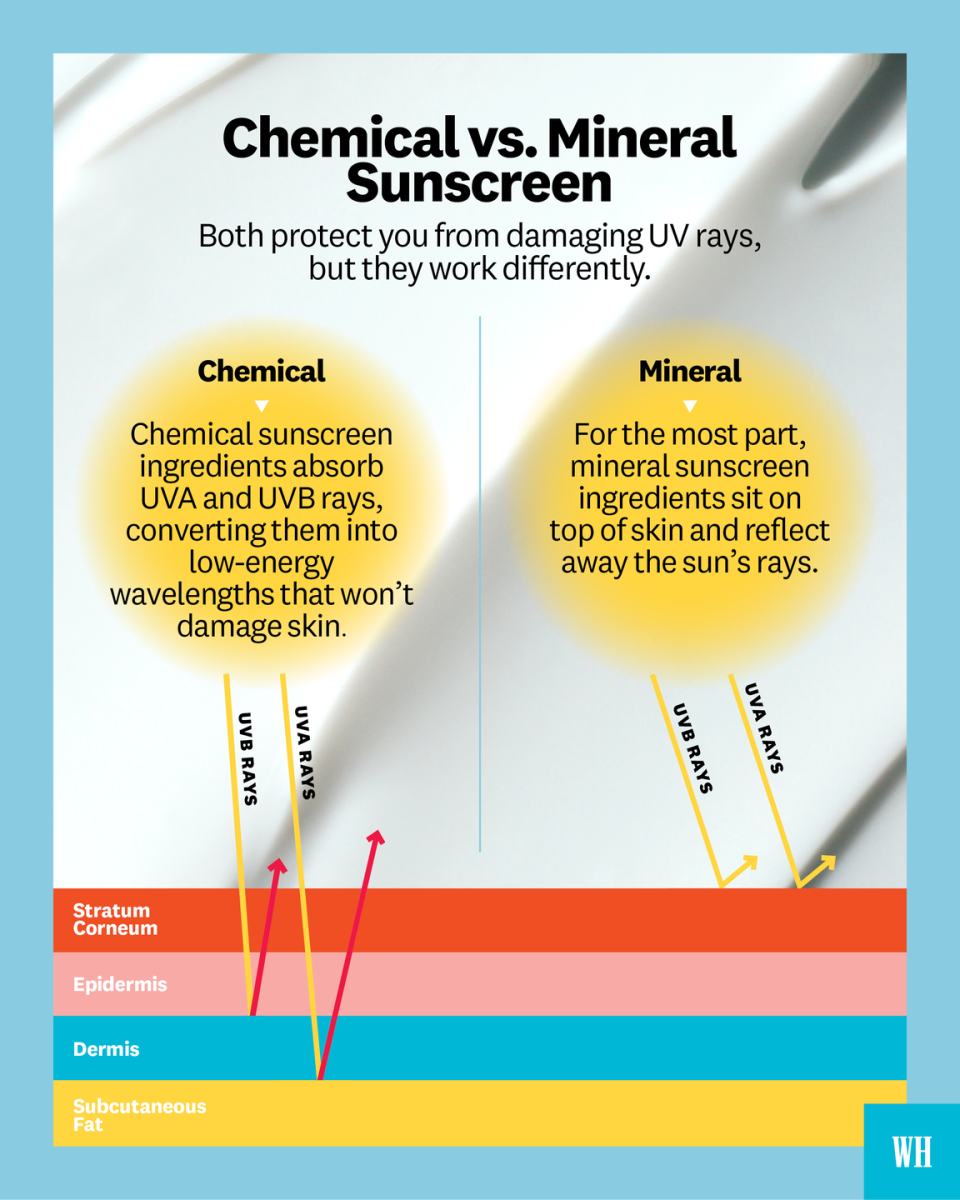
In the past, mineral formulas had a thick texture and chalky finish—not exactly a pleasant user experience. But Dr. Garshick notes that newer formulations absorb easily without leaving a white cast behind. “Personally, I think the best sunscreens for face are tinted mineral sunscreens,” says Dr. Marchbein. The tint comes from iron oxides, which impart a pigment to the SPF but also give an added benefit of blue-light protection, since broad-spectrum, nontinted sunscreen only protects against UVA and UVB rays, she says.
When should I apply sunscreen—before or after moisturizer? Sunscreen should be applied as a last step in a morning skin-care routine and prior to makeup. “While some makeup may contain SPF, it’s likely not providing adequate protection,” Dr. Garshick says. In other words, a dab of tinted moisturizer won’t cut it. Start with the appropriate serving of daily SPF 30 and treat makeup with SPF as a backup only.
Chemical sunscreens absorb UV rays before they penetrate skin. They contain organic filters such as oxybenzone, avobenzone, octisalate, octocrylene, homosalate, and octinoxate, and they often boast transparent and lightweight textures. However, they aren’t as well tolerated as mineral formulas. “The chemical filters are more common culprits of irritation,” Dr. Rossi says.
Chemical sunscreens have also come under scrutiny over the past few years due to concerns that their ingredients are absorbed into the bloodstream via skin. In fact, 12 filters are under active review for safety by the FDA, but Dr. Garshick doesn’t see this as cause for alarm. Remember: Just because there is some evidence of absorption doesn’t mean any of these ingredients have been linked to any adverse health effects. “To me, it’s really about personal choice and your comfort level,” she says. “There is no conclusive data at this time that any sunscreen ingredients—mineral or chemical—need to be avoided. But if you’re worried, we have sunscreens with zinc oxide and titanium dioxide that have been classified as GRASE—generally recognized as safe and effective—by the FDA.”
But the best sunscreen is one you’ll actually wear, so find a formula you like and use it religiously.

What Exactly Does SPF Mean?
The terms SPF and sunscreen are often used interchangeably, but the former is actually shorthand for “sun protection factor,” referring to the level of UVB protection in a formula. “Basically, this is a measure of the time it takes to redden the skin when wearing sunscreen compared to the amount of time required to develop a sunburn without wearing sunscreen,” Dr. Garshick says. Another way to think of it: SPF is a measure of protection from solar exposure that takes time and solar intensity into consideration. The number is not necessarily related to an amount of time for which you’re covered. An SPF of 30 can provide 97 percent UVB protection. But remember: “This is predicated on applying a thick and even coat of sun protection on the skin and reapplying every two hours,” says Dr. Rossi.

How To Read A Sunscreen Label
Derms recommend SPF 30 or higher for daily use. However, if you have a history of skin cancer or are going to the Bahamas or skiing in Vermont, you may want to consider an SPF 50. And it’s important to note that “the SPF number only refers to the amount of protection against UVB radiation, the type of UV rays most responsible for developing a sunburn,” Dr. Garshick says. “It is not a measure of UVA protection.” That’s why, in addition to one that has an SPF of 30, look for a sunscreen labeled as broad-spectrum, which means it shields skin from both UVA and UVB rays.

Are There Sunscreen Ingredients I Should Avoid?
“Sunscreens are very safe to use and have been shown to prevent skin cancer and skin aging. However, there are certain ingredients you may want to steer clear of,” Dr. Rossi says. “Some chemical filters such as oxybenzone and benzophenone-3 may cause a photo allergy, which is when a chemical interacts with UV on the skin and causes a reaction.”
That said, a skin type–centric approach to sunscreen shopping is always best. A few things to keep in mind if you’re…
Acne-Prone: “It’s important to look for a product that is noncomedogenic and won’t clog the pores,” Dr. Garshick says. Oil-free, mattifying formulas are typically a good choice when your skin produces excess oil.
Sensitive: “For those with sensitive skin, it’s best to opt for a mineral sunscreen, as this is less likely to cause sensitivity or irritation,” Dr. Garshick says.
Dark Skin: For melanin-rich skin tones, certain sunscreens are known to leave a white film on the skin. A chemical sunscreen may be less likely to do so, and a tinted mineral formula can also blend easily into skin, says Dr. Garshick.
Mature Skin: Look for hydrating formulas with ceramides, vitamin E, and niacinamide.

Does Sunscreen Expire?
In a word, yes. “Some sunscreens will have an expiration date listed on the package, but in general, sunscreens are required by the FDA to remain effective for three years,” says Dr. Garshick. So, when you buy your next sunscreen, if you don’t see an expiration date on the label, write the date of purchase on the product so you can use that as a guide, she suggests. If you’re still unsure, trust your instincts. Any change in color or consistency are signs it’s gone bad, says Dr. Marchbein. If you wear SPF every day, you’ll use it up well before that happens, and proper storage can ensure it stays safe and effective. “Heat and humidity accelerate the breakdown of sunscreen, so be sure to keep it at cooler or room temperatures. Your car is not ideal,” adds Dr. Marchbein.

5 New Sunscreens We Love
Invisible Shield Daily Sunscreen Broad Spectrum SPF 50
This completely invisible formula (read: it's totally clear) can easily be used as a makeup primer—it leaves skin feeling velvet-y and matte so foundation glides right on. In addition to a blend of chemical UV filters, it contains rice photo-compounds to protect skin from free radical damage and aloe leaf juice to quench dryness. Don't leave home without it.
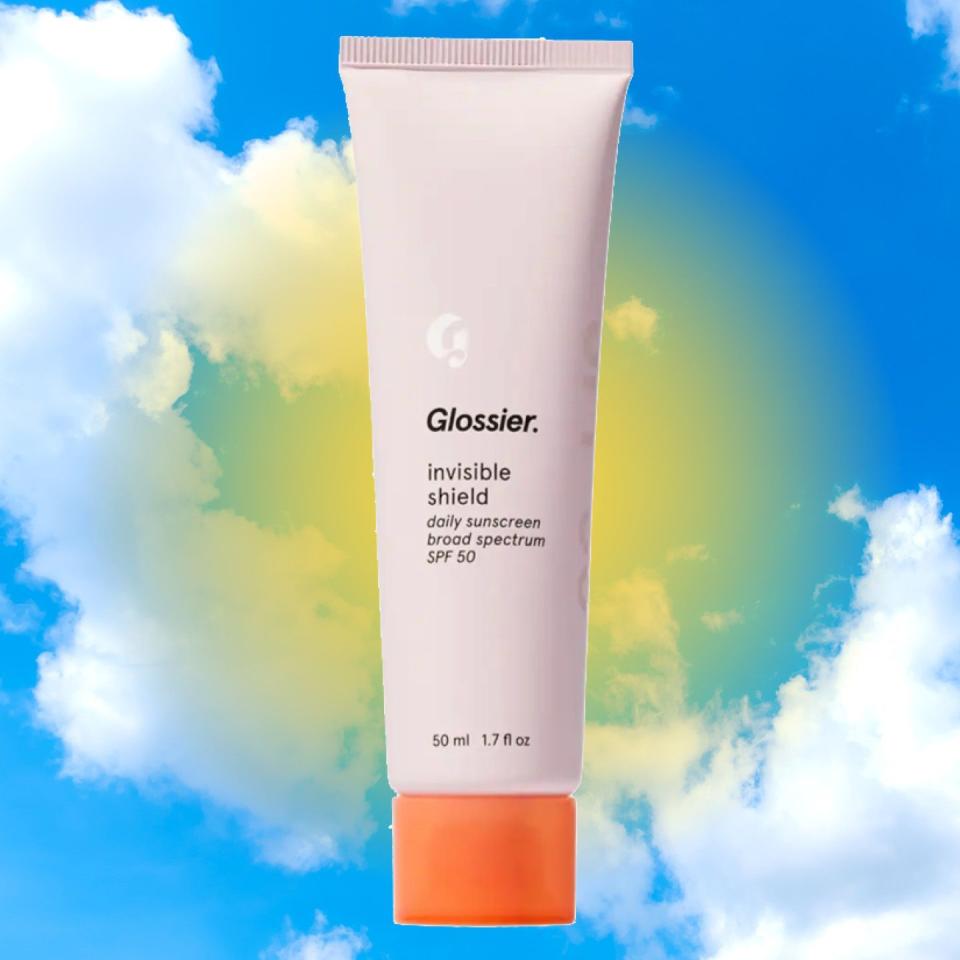
Invisible Shield Daily Sunscreen Broad Spectrum SPF 50
sephora.com
$32.00
Bright Reveal Broad Spectrum SPF 50 + Antioxidants
A cream-fluid hybrid that's easy to love, L'Oreal's new sunscreen protects with broad spectrum chemical filters and helps to improve the appearance of pesky discoloration with vitamins C and E. You'll be impressed by how hydrating it is—and the fact that it won't leave a white cast on even the darkest skin.
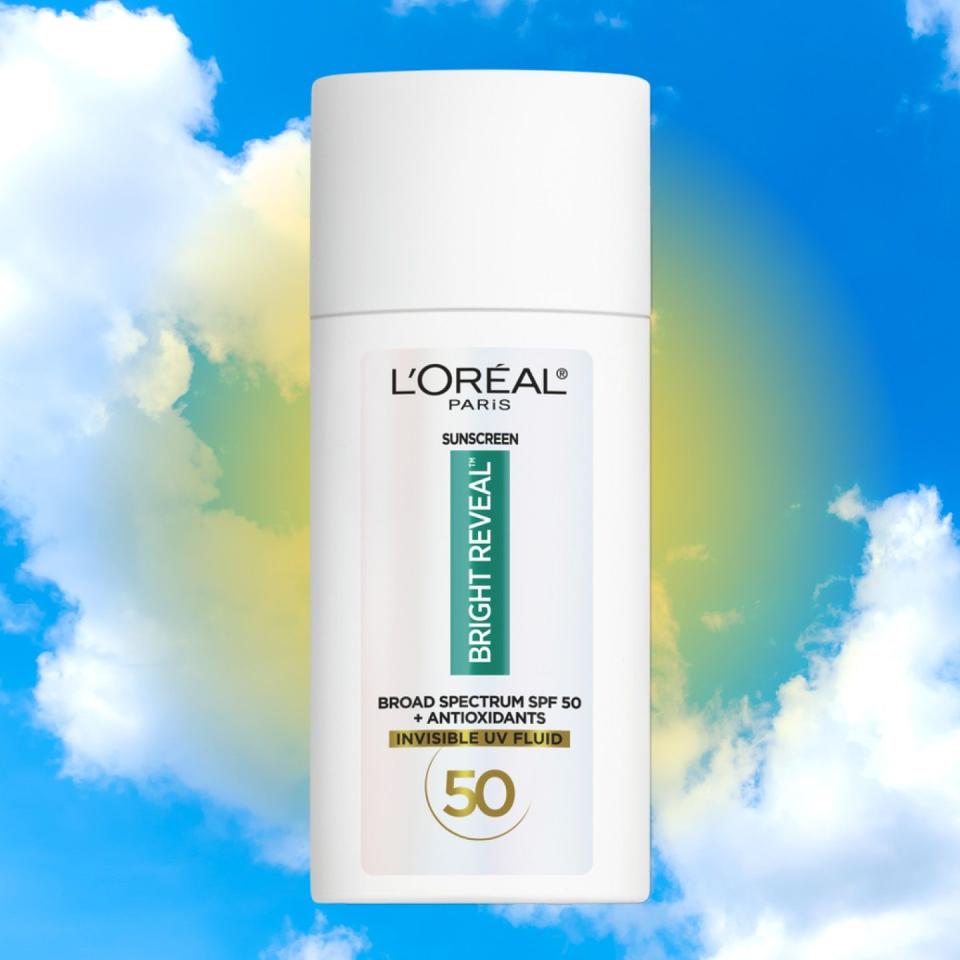
Bright Reveal Broad Spectrum SPF 50 + Antioxidants
ulta.com
$32.99
Daily Invisible Gel Broad Spectrum SPF 40 Sunscreen
This sun season, clear is where it's at: Bask's offering features chemical UV filters and also smooths on without a trace. On skin, it feels like heaven on skin thanks to a hefty dose of moisturizing squalene. Plus, this one is water- and sweat-resistant for up to eighty minutes—perfect for active wearers.
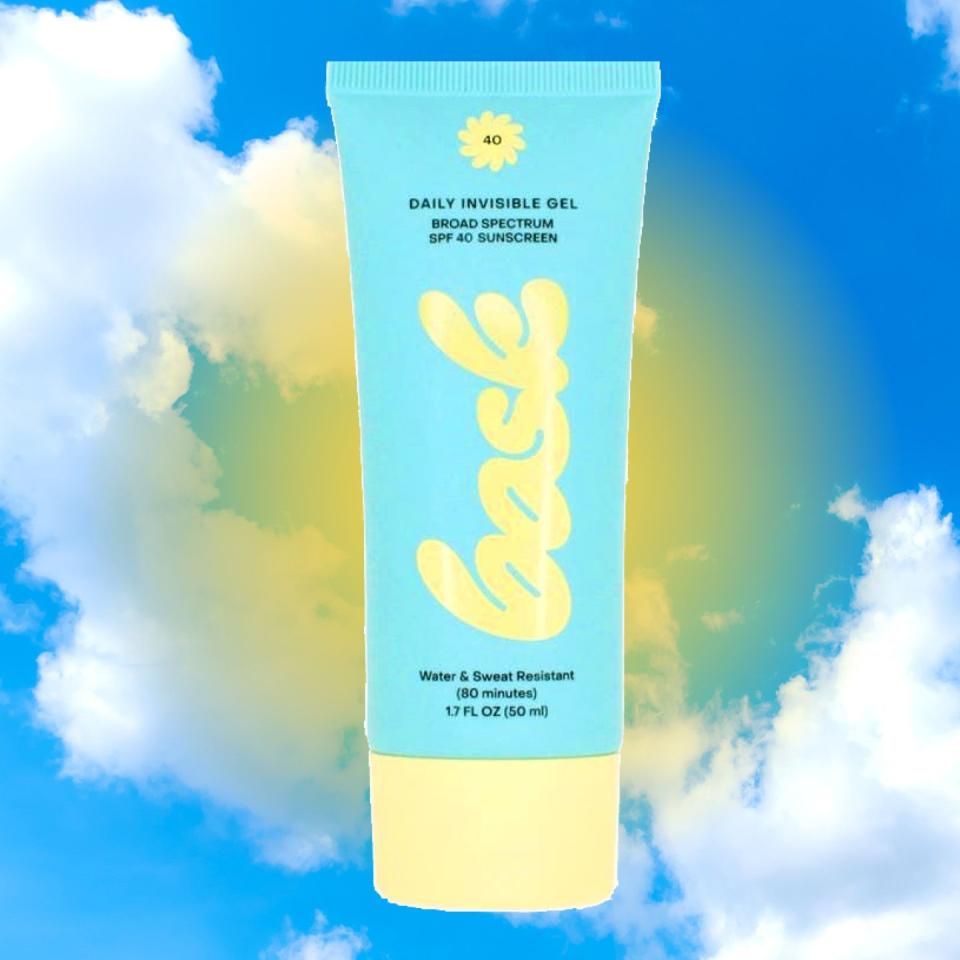
Daily Invisible Gel Broad Spectrum SPF 40 Sunscreen
nordstrom.com
$28.00
Water Drench Hyaluronic Cloud transparent Tint Moisturizer Broad Spectrum SPF 45
If you have dry skin, this is the SPF for you. Infused with a 30% hyaluronic acid complex and an ingredient called Pentavitin, it provides up to 72-hours of hydration to your complexion. The mix of chemical filters protects against UV damage and the transparent universal tint means there'll be no white cast left behind.
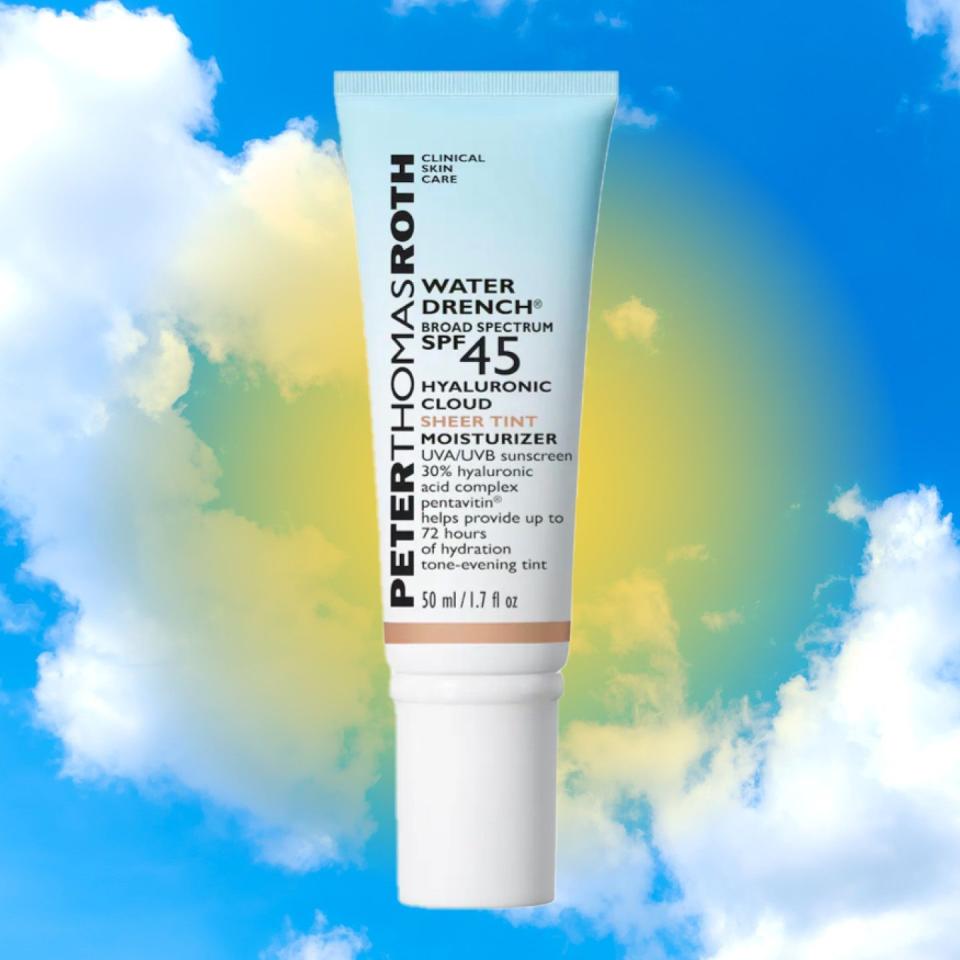
Water Drench Hyaluronic Cloud transparent Tint Moisturizer Broad Spectrum SPF 45
sephora.com
$56.00
Banana Bright Mineral Face Sunscreen SPF 30
Here's an all-mineral sunscreen we can really get behind. From Olehenriksen's famed Banana Bright line, it shields skin with 16.3% zinc oxide plus vitamin C and niacinamide to brighten your complexion, even skin tone, and defend against damaging free radicals. The universal tint means there won't be a hint of a white cast (we used it on the model's in our story and it looked seamless).
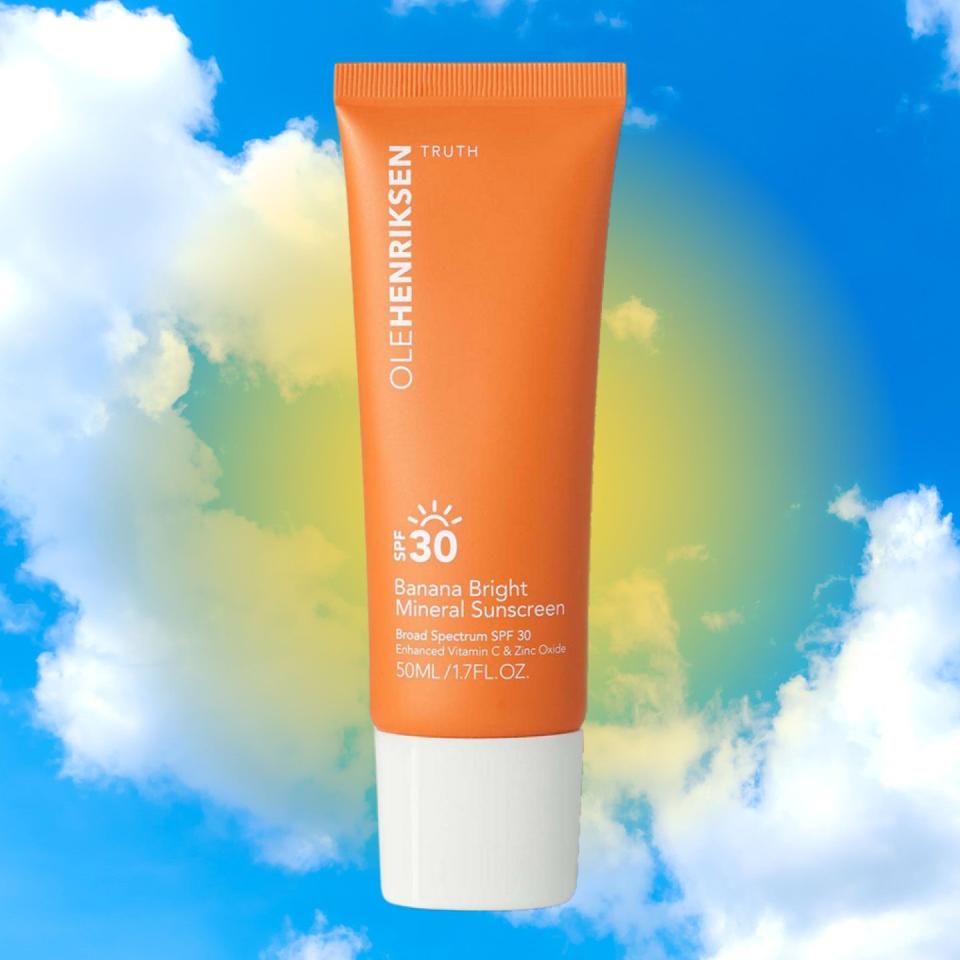
Banana Bright Mineral Face Sunscreen SPF 30
ulta.com
$35.00
Meet our experts: Shari Marchbein, MD, assistant professor of clinical dermatology at New York University School of Medicine, Anthony Rossi, MD, board-certified dermatologist at New York's Memorial Sloan Kettering Cancer Center, Marisa Garshick, MD, clinical assistant professor of dermatology at New York-Presbyterian Weill Cornell Medical Center
You Might Also Like

